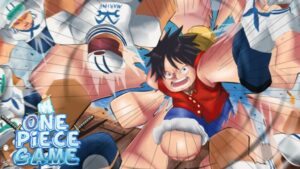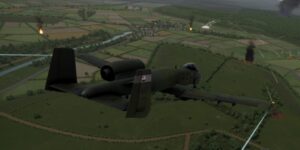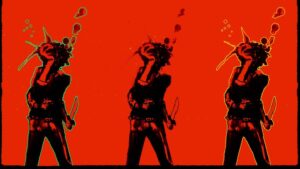
Two gaming icons, from two very different games – but I’m here to tell you why they may just have more in common than you think…
Pac-Man is arguably one of the first mainstream gaming icons. Arriving in Arcades in 1980, many will know the original granddaddy of gaming, and few gaming figures are as instantly recognisable as the hungry yellow circle. Pac-Man is as much of a pop culture icon as a gaming one, and not many characters in media have been able to transcend to the levels of popularity that Pac-Man has.
In the original Pac-Man game, the goal was simple. Navigate a variety of mazes, chomping down on as many yellow pellets as possible while avoiding the four ghosts who are determined to stop you. Although its design may look simple by today’s gaming standards, at the time it revolutionised gaming as we know it, with an impact that cannot be overstated.
Then there’s Solid Snake. Arguably as much of a gaming icon as Pac-Man, with a legacy almost as long, with the original Metal Gear arriving on home consoles in 1987. A master of stealth and infiltration, Solid Snake is one of the coolest characters in videogames, with a long and convoluted history that is easy to overlook because the games are so damn good.
Before jumping in any further I will first offer this disclaimer – I have not played any of the early Metal Gear games. My first encounter with the series was with Metal Gear Solid on the PS1, but so much of the core gameplay was established in the early games that they are hard to ignore. It is in these early games that so many elements that we associate with Metal Gear were first established, and as much as this was the story that Hideo Kojima wanted to tell, he has been quite open in that he was very much limited by the technology of the time.
RELATED: Konami To Start Reselling Delisted Metal Gear Solid Titles
Looking back on the original Metal Gear, and the sequel Metal Gear 2: Solid Snake, the threads linking these games to the later titles are clear to see; the main ones being the gameplay elements that these titles laid down. The most obvious is a simple element that has become a crucial tactic in every Metal Gear game – avoid enemies and don’t get caught. Each subsequent game in the series follows this simple mantra, and although combat is at times an inevitable aspect of each game, the end goal of each is always to do as much as you can without being spotted by the enemy.
Although Pac-Man and Metal Gear Solid are two very different games at first glance, when boiled down to their base components what you are left with is surprisingly similar. In one, you play a character who is hunted through increasingly complex areas, avoiding enemies and looking for power-ups to level the playing field. In the other, you play a character who is hunted through increasingly complex areas, avoiding enemies and… I’m sure you see where I am going.
It is here where the brilliance of both Metal Gear and Pac-Man can be found, alongside the addictive gameplay elements that they both use to jump on our backs and take us for a ride. Although graphically, and narratively, both games are very different, their core gameplay is surprisingly similar, with both following a simple and clear decree- avoid enemies and don’t get caught. Stealth is the aim of the game in Pac-Man as much as it is in Metal Gear, and as soon as you start thinking about it, the links quickly become clear.
Such a simple concept, but both Pac-Man and Metal Gear drill into it so well that it is soon easy to see why they are both hugely popular. There is something programmed into us from an early age that means we enjoy games where we are chased, whether those games be virtual and played out on a screen, or physical and played for real. Walk onto any playground on any given day, and chances are you will see this in action.
Children do this all the time, but it is something we quickly grow out of. The image of children chasing one another around a playground is likely to bring on a sense of nostalgia – watching adults chasing each other may feel a little off or even frightening. Metal Gear Solid took the idea of being chased and made it accessible again – they made it acceptable for teenagers and adults to enjoy being chased, and in the comfort of their own homes to boot.
What Pac-Man did was take this “chase” concept and layer it with a few more addictive elements, further drawing you in. Flashing lights. Catchy, repetitive sounds. High Scores. Pac-Man took the idea of being chased on the playground and weaponised it into a mass-market consumable that could be bought and played as long as you had enough money to throw into the coin slot.
Hooking into something that goes way deeper than this article comparing two videogames could easily delve into, Pac-Man found something that is a core part of the human experience – when we are getting chased, our adrenaline spikes. Our heart rate quickens. In a safe and comfortable space, being chased is exciting. It’s fun. Without this, there is a solid (no pun intended) argument that the Metal Gear we have today could be fundamentally different. Pac-Man walked so that Solid Snake could run.
Having laid down the core gameplay elements in Metal Gear, Hideo Kojima was able to revisit and revise them with the release of Metal Gear Solid in 1997. I can still remember the first time I was spotted as I tried to access the now infamous Shadow Moses military base, having run around a corner and bumping headfirst into one of the many guards patrolling the warehouse I now found myself in.
Instantly the game shifted gears – a shrill siren played out, the music increased in tempo, and a countdown timer appeared. Instantly my tiny little brain was set to red alert, mirroring the character I was playing on the screen. For the sake of this narrative, I’d like to think I managed to get away, hiding behind a container or cardboard box, but in reality, I was probably shot where I stood as the screen faded to black, while Colonel Campbell shouted “Snake” on repeat in what has now become an iconic “Game Over” screen.
RELATED: Hideo Kojima Represents The Past And Future Of Gaming
Here too, the similarities are obvious when put on paper like that – the flashing lights, instantly recognisable sounds – the only thing missing from Metal Gear Solid is the Hi-Score leaderboard but had Metal Gear been in development for Arcade machines and not home consoles I’m sure they could have snuck one in somewhere.
Hideo Kojima, the genius that he is, further layered in addictive elements in the same way that Pac-Man had done so before it. Whereas Pac-Man limited the mazes to one screen, Metal Gear extended these mazes over a much larger play space, visible via a handy little radar in the corner of the screen.
Comparisons between Pac-Man and Metal Gear Solid’s radar could easily be made too, as the radar simplifies the game space so that characters are relegated to coloured spots and the area is mapped out in simple shapes, in a manner not a million miles away from the mazes you’d find in Pac-Man.
The radar became a handy tool to help players work out the layout of the area they now found themselves in, alongside marking out enemy patrol routes. That is until you are spotted, at which point the radar is replaced by the timer counting away the seconds until the enemies relax and actively stop looking for you, further heightening the thrill of the chase.
The rules of both games further cement the comparison between them. Every game has rules, whether they be explicitly stated or discovered as you play. This is true for both Pac-Man and Metal Gear Solid. It may be an obvious fact, but both follow strict rules that ensure the chase always remains fair, even when you are caught. This is both a crucial and obvious fact that not only ensures that these games are so fun to play but it is equally a reason as to why they are so fondly remembered by those that played them.
Pac-Man, if you didn’t already know, is pursued by four ghosts, who each have their own set of rules that they follow to the letter. Blinky, Pinky, Inky, and Clyde, as they are known, each follow their own given ruleset as they relentlessly chase you around the maze. Blinky (the red Ghost to you and me) is the only ghost that actively chases Pac-Man. Pinky (yep, the pink one) tries to guess where Pac-Man will be, while Inky (the blue one) uses the position of Pac-Man and Blinky to work out where to go. Finally, Clyde, the orange ghost, acts like Blinky until it gets close at which point it will zoom off to a set area of the maze (yes, it is all a little bit more complicated than that but you get a general idea).
Should Pac-Man eat one of the few large pills that are spread out around the maze, you are given a small window of opportunity to turn the tables and chase the ghosts down. Take a ghost out, it returns to the ghost house in the middle of the screen before returning later like nothing has happened, resuming its relentless pursuit confined by the rules I mentioned earlier.
Just like the ghosts in Pac-Man, the enemies in Metal Gear each follow their own set of rules. At rest, they will patrol a set area, patrolling in a way that can be predicted and thus avoided by the player. That is until you are spotted, at which point all hell breaks lose and they turn all Blinky the Red Ghost on you, rushing your current position to try and take you out.
In later games, these rules are complicated further, with enemies calling for back-up or sweeping rooms together as they try and hunt you down. Regardless of how complex these enemy tactics become, they always remain predictable. Predictable means they can be avoided, and it is this predictability that keeps the game fun, regardless of how frustrating it might get later on.
Should you get caught or take the fight to them, you will need to swallow Metal Gear Solid’s version of the large yellow pill. Although Metal Gear Solid does contain pills, the metaphor I am trying to make here is between the large yellow pills of Pac-Man and the many guns you find as play in Metal Gear Solid. Enemies can be stunned or killed, but once the initial chase period has ended and the countdown timer hits 0, calm will resume and enemies will return to their patrol routes; stunned enemies wake up while dead ones are revived from some unknown area off-screen – just like the four ghosts returning from their ghost house in Pac-Man.
I’m sure I could continue to go on about the fundamental similarities between Pac-Man and Metal Gear Solid; the more I started thinking about it for this article, the more comparisons I was able to draw between the two. Yes, some of those might be a bit of a stretch (is the Nakita rocket launcher the Metal Gear Solid’s ultimate yellow pill? You decide…), but the core argument remains the same. Heck, even Hideo Kojima has stated that Pac-Man influenced his early designs for Metal Gear to some degree, so I’m not even being that imaginative in simply pointing out what some would argue is already so obvious.
One thing that can be stated is that both games had a huge impact on the gaming landscape, and both have influenced plenty of games in their own right in the many years since they were released, whether that be with their stealthy antics or addictive gameplay. As the Metal Gear franchise celebrates its 35th Anniversary this year, here’s hoping that the thrill of the chase is far from over and that Kojima and Konami can come to some sort of agreement to let a whole new generation of gamers experience it for themselves.
NEXT: Hideo Kojima Fans Petitioning To Cancel His Xbox Need To Calm Down
- amazon prime gaming
- axie infinity
- Casino Games
- coingenius
- Dualshokers
- EA Sports
- Evil Geniuses
- Gaming
- gaming headset
- gaming pc
- Hideo Kojima
- madden nfl
- Metal Gear Solid
- Metal Gear Solid 2
- Nintendo
- Online casino games
- Originals
- Pac-Man
- pc games
- plato
- plato ai
- plato data intelligence
- plato game
- plato gaming
- platodata
- platogaming
- playstation
- prime gaming
- Team SoloMid
- xbox
- zephyrnet












